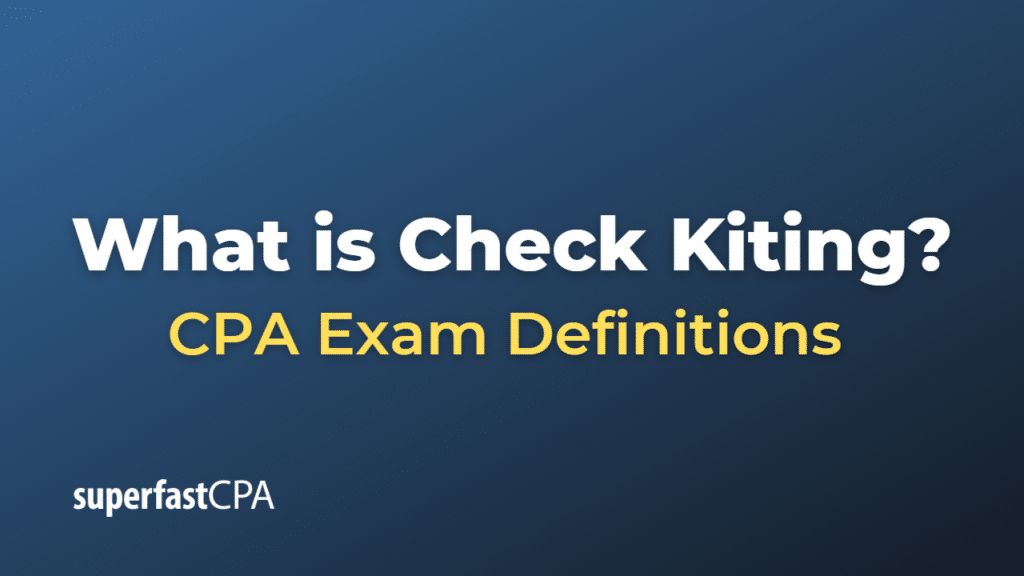Check Kiting
Check kiting is a fraudulent scheme involving the intentional writing of checks from an account with insufficient funds, taking advantage of the time it takes for banks to process checks (called the “float” time). The objective of check kiting is to gain access to funds that do not actually exist or to create an illusion of available funds in one or more bank accounts.
Check kiting typically involves two or more bank accounts at different banks or branches. The fraudster writes a check from one account (Account A) with insufficient funds and deposits it into another account (Account B). Then, before the check from Account A clears, the fraudster writes another check from Account B, which now shows a temporarily inflated balance due to the pending check from Account A, and deposits it back into Account A or another account (Account C). This creates a false appearance of sufficient funds in the accounts involved.
The fraudster continues this cycle of writing checks between accounts, making it difficult for banks to identify the insufficient funds and allowing the fraudster to withdraw money that doesn’t actually exist. Eventually, when the banks discover the check kiting scheme, the checks will bounce, and the accounts will be overdrawn.
Check kiting is illegal and can result in severe penalties, including fines, imprisonment, or both. Banks and financial institutions have implemented various measures, such as faster check-clearing processes and sophisticated fraud detection systems, to prevent and detect check kiting and protect their customers from related financial losses.
Example of Check Kiting
Let’s consider an example of check kiting involving two bank accounts: Account A and Account B.
- The fraudster, Jane, opens two bank accounts: Account A at Bank X and Account B at Bank Y. Both accounts have a minimal balance (e.g., $100 each).
- Jane writes a check for $5,000 from Account A (which has insufficient funds to cover this amount) and deposits it into Account B at Bank Y.
- Before the check from Account A clears, Bank Y temporarily credits Account B with the $5,000 deposit, showing a balance of $5,100.
- Jane then writes a check for $4,900 from Account B and deposits it into Account A at Bank X.
- Bank X temporarily credits Account A with the $4,900 deposit, showing a balance of $5,000.
- Now, Jane withdraws $4,500 from Account A, even though there were never sufficient funds to cover the $5,000 check she initially wrote.
- Jane continues this cycle of writing checks between accounts, taking advantage of the float time to create an illusion of available funds.
Eventually, the banks will process the checks and discover that the balances in both accounts are insufficient to cover the checks. By that time, Jane has already withdrawn the money, leaving the accounts overdrawn. This check kiting scheme is illegal, and if caught, Jane could face severe penalties, including fines and imprisonment.













